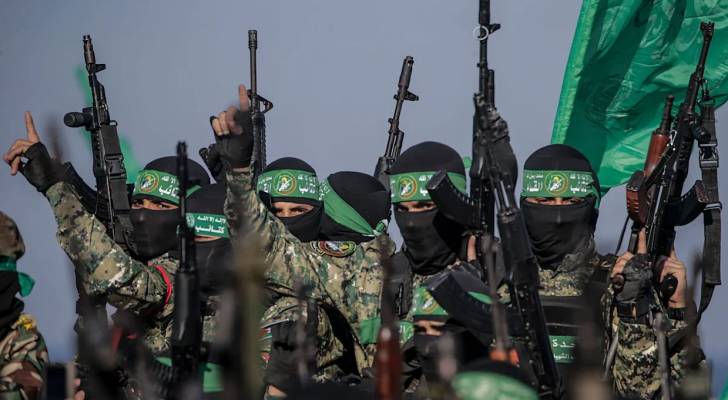Hamas fighters in Gaza during a military parade. (File)
Hamas says disarmament “off the table”
• Hamas firmly rejects disarmament clause in Trump’s Gaza plan
• Obstacle highlights fragility of current ceasefire and future negotiations
A senior Hamas official confirmed Saturday that the demand to disarm the movement, included in US President Donald Trump’s Gaza plan, is “completely off the table”. This statement presents a major challenge for the next stages of the fragile ceasefire, which entered its second day.
The ceasefire, signed early Friday, ended a two-year-long aggression and initially focused on stopping hostilities, prisoner exchanges, the withdrawal of ‘Israeli’ forces, and humanitarian aid delivery. However, Trump’s broader plan -forming the basis of the agreement- contains more complex provisions, including post-war security and political arrangements, most notably the issue of Hamas disarmament.
Read more: 'Israel' kills 35 in Gaza despite ceasefire agreement
A postponed challenge threatens the agreement
In an interview with AFP, the Hamas official, speaking anonymously, said: “The issue of handing over weapons is out of discussion and not on the table.” This is the first official clarification on Clause 13 of Trump’s plan, which calls for the disarmament of Gaza under independent supervision.
The statement exposes a deep gap between Hamas and the visions of Washington and Tel Aviv for Gaza’s future. While the US and ‘Israel’ view disarmament as essential for lasting peace, Hamas and other Palestinian factions see armed resistance as a legitimate right against occupation.
Mediators appear to have postponed this contentious issue to the “second phase” of the peace plan, focusing first on the urgent tasks of halting the war and exchanging prisoners. Nevertheless, Hamas’s firm stance makes clear that the obstacle remains unresolved - merely deferred.
From fragile truce to difficult negotiations
The current agreement should therefore be seen as a long-term truce, not a final settlement. While global attention focuses on implementing the first phase, the road to a comprehensive and lasting peace remains long and fraught with obstacles, with the issue of resistance weapons at the center of future negotiations.




